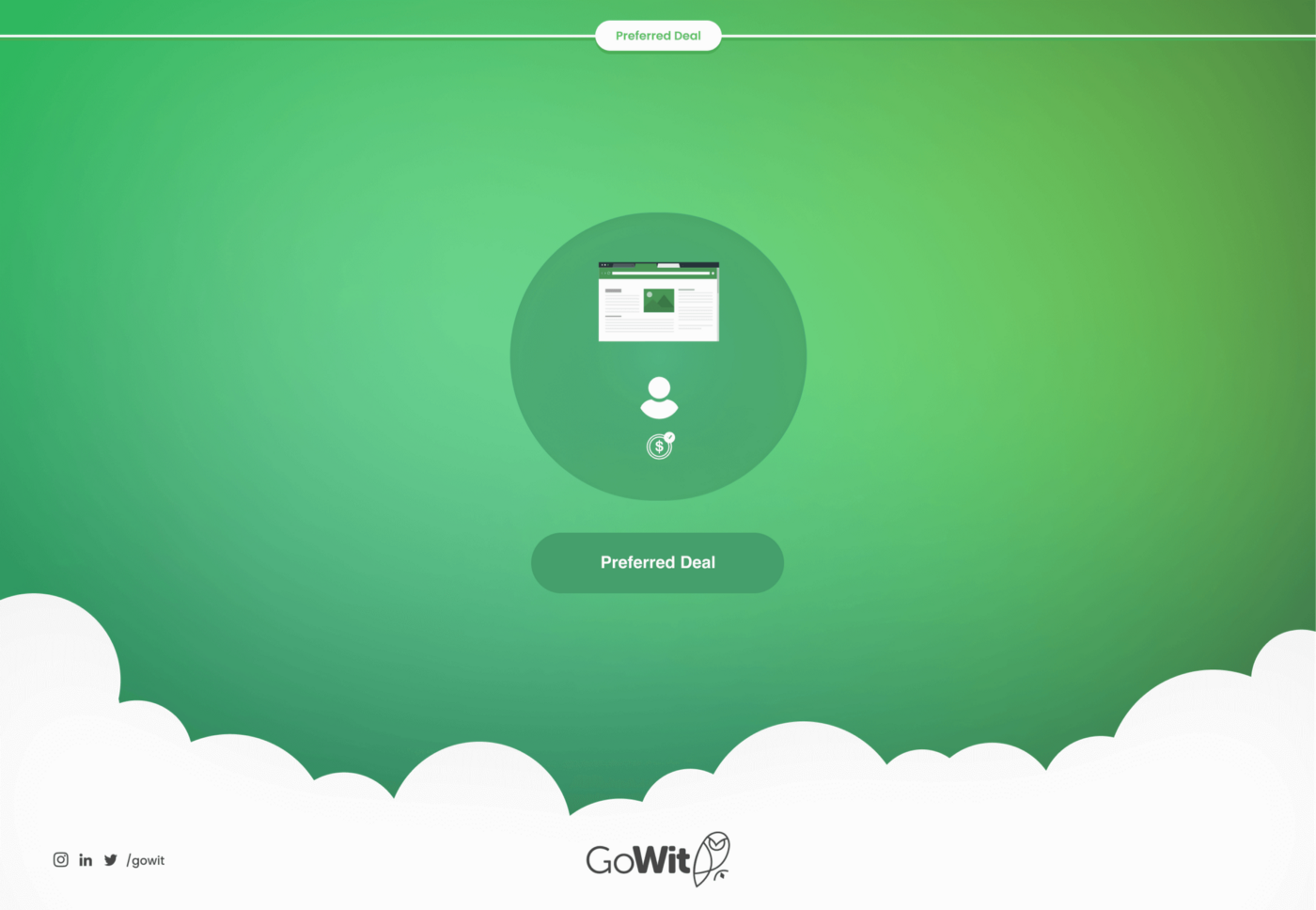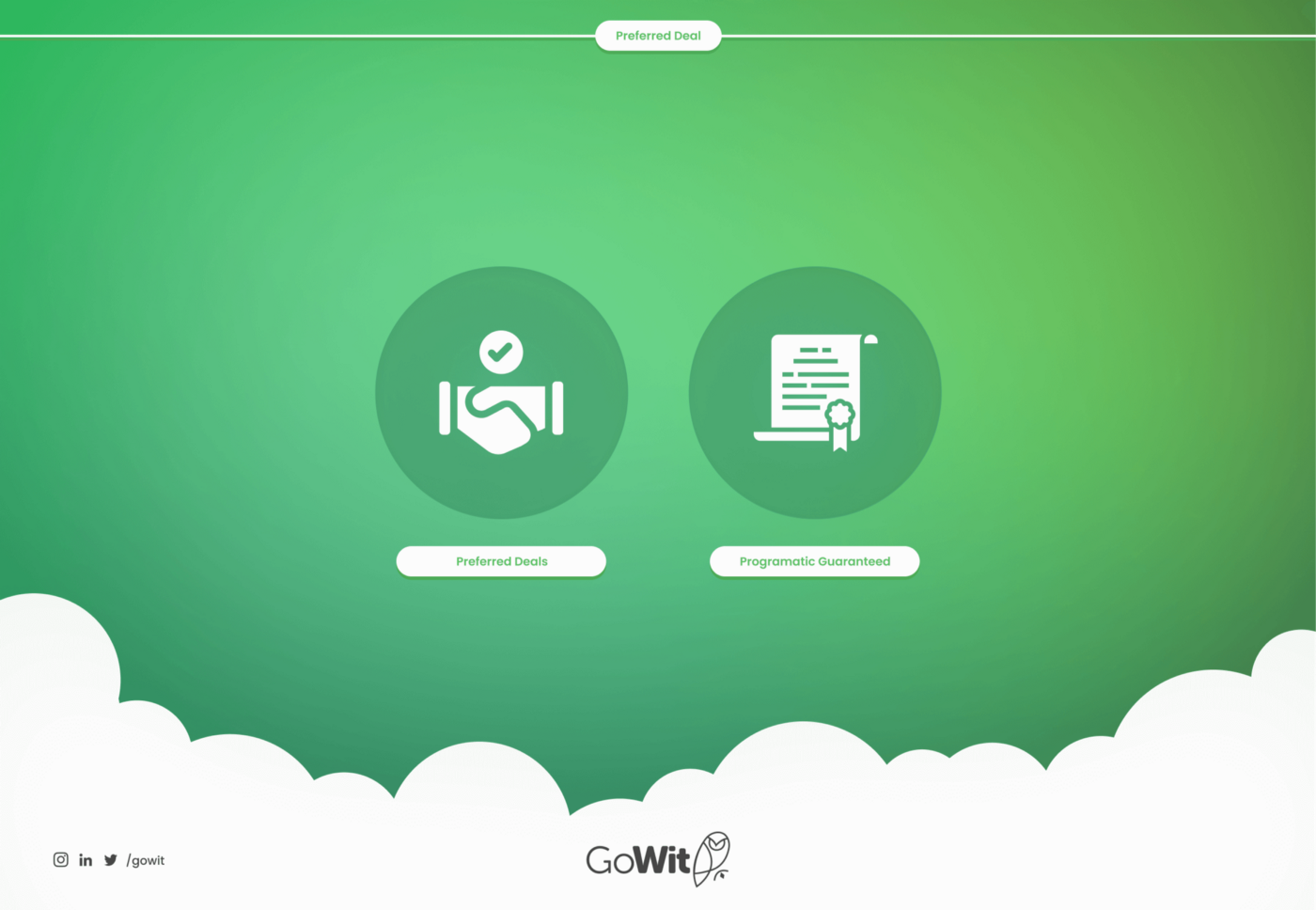Programmatic Advertising Essentials: What Is A Preferred Deal?
Digital Advertising
.
4 min read
Preferred deals are based on direct agreements between advertisers and publishers. A publisher can give a priority to advertisers for looking at inventory first.

A Brief Overview: Programmatic Advertising
In the past, digital ads were traded between publishers and advertisers by e-mail. In time, with the growth of digital advertising volume and the rising number of advertisers and publishers, the traditional method became more complex and difficult to sustain with manpower. Consequently, the ‘programmatic advertising’ term has entered into our lives. It is important to emphasize that programmatic advertising, which allows faster, more efficient, and safer ad trading, has made a big difference in a short time.
What Is A Programmatic Advertising?
Online ad trading uses some parts of advertising technology (AdTech) to create better abilities. It manages the dynamic process transparently, quickly, and accurately because it’s supported by algorithms and softwares. Automated auctions help to minimize error rate and time loss. Programmatic advertising gathers data through user’s browsers ( e.g cookies, IP, pixel tags), analysis every piece of information, including behaviors and preferences. It provides targeting options for SSP-DSP sides along with highly relevant ad viewing experiences for visitors, it also creates ample opportunities for brands such as reaching potential customers, increasing interaction rates, developing the marketing strategy, and brand awareness. Thanks to these features, the market share of programmatic advertising has reached remarkable levels in the digital world.
How Does It Work?
It takes place between publishers with the available ad space and the advertisers or ad networks who want to buy online ad space. The platform brings together a variety of potential advertisers and publishers. The primary goal is providing a perfect match environment for efficiency. In short, it consists of SSP (Supply-Side Platforms), Ad Exchange, and DSP (Demand-Side Platforms) components.

What Is A Preferred Deal?
Essentially, preferred deals are based on direct agreements between advertisers and publishers. A publisher can give a priority to advertisers for looking at inventory first. Generally, CPM is higher than auction models because publishers prefer to offer premium inventory. As a non-guaranteed based model, advertisers can bid optionally. While the advertiser has exclusive first-look access, the inventory can not be reserved. Also, there is no obligation to purchase the inventory.
How Does It Work?
In practice, both advertisers and publishers can initiate negotiation. The terms, inventory details(Price, inventory, ad sizes, audience, etc.), campaign requirements are discussed and the offer is created. The agreement is prepared by the publisher. Advertisers review the offer, the deal is initiated, and a Deal ID is sent to the advertiser. When a request is sent by the publisher for the inventory, the advertiser evaluates the request and decides whether to bid. If no buyers consider offering, inventory goes directly to other auction models.
Preferred Deal Upsides
Evaluating the inventory with a preferred deal instead of an auction model brings many advantages for publishers and advertisers.
For Publishers:
- Publishers can set fixed prices, and advertisers pay negotiated prices for certain impressions. As a result, the publishers can earn more than they can earn from an auction.
- Preferred deals can eliminate the risk of remnant inventory.
- They can reach an agreement with certain advertisers, which allows having more control over inventory and the whole process.
For Advertisers:
- Preferred deals give advertisers priority access to inventory with pre-negotiated fixed CPM without price fluctuations.
- More information about inventory details can be obtained from publishers and uncertainties can be eliminated.
- They can reach an agreement with certain publishers, which allows having more control over inventory and the whole process.
Join to get free updates every week
Preferred Deal Downsides
For Publishers:
- Advertisers make purchasing decisions based on their evaluations. Sometimes inventories and ads may not match and advertisers can stop purchasing. In such situations, publishers should reach an agreement with more advertisers or determine alternative sales methods to meet their needs.
- It takes time and effort to find the right advertiser for the audience and run the process. The negotiation process, which takes place in seconds in programmatic advertising trading, can take a long time on the preferred deal.
- Unlike auction models, different opportunities can be missed because there is no competitive environment.
- Smaller publishers who do not have a large audience are unlikely to find opportunities with this model, which means that the model does not appeal to everyone.
For Advertisers:
- If advertisers bids on the preferred deal, they cannot bid on the same inventory through the other auction models.
- It takes time and effort to find the right publisher for the target audience and run the process. The negotiation process, which takes place in seconds in auctions, can take a long time on preferred deal.

What Are The Difference Between Programmatic Guaranteed And Preferred Deals?
In both models, certain advertisers have priority access to inventory, this situation can lead to confusion between the two models.
Programmatic Guaranteed:
- Prices are determined by publishers for only selected advertisers.
- Advertisers can reserve inventory, it is a guaranteed model.
Preferred Deal:
- Advertisers decide based on offer.
- Advertisers have priority for the agreed price. They can see the publisher’s inventory first.
Conclusion
Preferred deals are direct agreements between advertisers and publishers. Negotiating a fixed price provides several advantages for both publishers and advertisers. However, it is a non-guaranteed approach, at this point, advertiser and publisher sides may also make agreements with different advertisers or publishers, depending on the target strategy and budget.
Share
